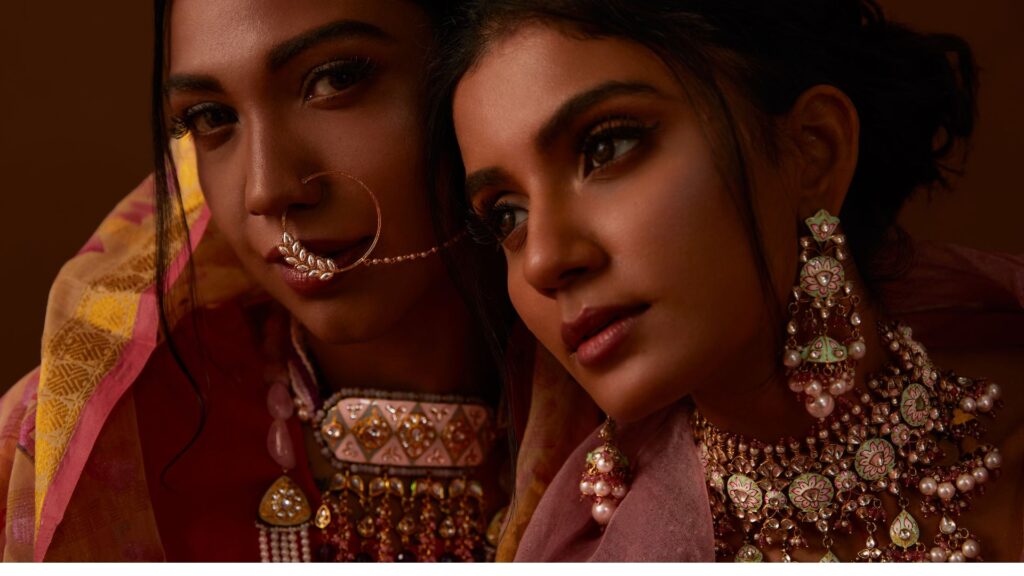
The Widespread History of Jewelry Production
Jewelry has existed in human life for thousands of years. Jewelry has been utilized since ancient times to express beliefs, beauty, and power. The earliest jewelry was made from natural materials like stones, bones, and shells. Archaeologists have found more than 5,000-year-old rings, bracelets, and necklaces. Jewelry was seen as a sign of prosperity and protection from evil in ancient Egypt. Heavy gold jewelry with colorful stones was worn by queens and kings. Jewelry has been a traditional and cultural symbol in India. Indians have used jewelry during religious rituals, wedding ceremonies, and celebrations since the Indus Valley Civilization. Jewelry was often utilized to show social status in Europe during the Middle Ages and the Renaissance. Jewelry making is now a truly international art form because every culture has developed its unique jewelry styles and methods over time.
The Importance of Jewelry
Jewelry holds deep meaning for people worldwide and is more than something merely to display. It forms a part of a major part of life occasions, including religious ceremonies, weddings, and births across several different cultures. To give one example, for instance, Indian weddings involve a whole range of jewelry, like nose rings, bangles, and mangalsutra, which everyone carries, each bearing a specific meaning. Some African cultures also use jewelry to show their age, marital status, or even bravery. Jewelry is also used to show love and affection; a pendant, bracelet, or ring can keep memories for the rest of one’s life. Besides being utilized for individual use, jewelry has also been an important investment and source of wealth. Gold and silver jewelry have often been passed on from generation to generation. There are still people who consider jewelry to be sentimental, emotional, and cultural, besides being a mode of fashion.
How Jewelry Is Made
Jewelry making involves creativity and precision. Either the old way of doing it manually or the modern one of employing machines can be employed. Typically, the process starts with design. A designer sketches the artwork or creates a digital version of it. The second step is to mold the metal, which can be done by hand cutting and forming or by melting the metal and casting it into molds. Gemstones or other decorations are placed after the overall shape is finished. It is very skillful and a very delicate section. The piece is buffed to get it to shine after the stones have been placed. While more work and time are needed for handmade jewelry, every piece is unique. Some cultures continue to produce traditional jewelry completely by hand, and it is inherited from generation to generation by skilled craftsmen.
Jewelry Types and Materials Used
Different materials are employed in the production of jewelry, depending on the type and purpose. The most common materials used are metals like copper, silver, platinum, and gold. Due to its value and shine, gold is most favored across many cultures. Silver is favored for its fragile, elegant look. More modern, platinum is used in upscale jewelry.
Jewels and stones are another very important element of jewelry. They include pearls, sapphires, emeralds, diamonds, and rubies. Semi-precious stones like jade, amethyst, and turquoise are often used. Glass, beads, enamel, and even wood or clay for folk or artistic pieces are also employed in some jewelry.
- Jewelry is very diverse around the globe. Some of the most prevalent types are:
- Necklaces can be plain chains or decorated with pendants and jewels, and are draped around the neck.
- Earrings may be studs, hoops, or danglers, and so on.
- Bangles and bracelets are draped around the wrist and may be of stone, string, or metal.
- Rings are commonly used for fashion, marriage, or engagement.
- Ankle and toe rings are especially common in Indian culture.
- Besides, there are local styles of jewelry in every place. For example:
- Gold foil is employed for placing stones in Indian Kundan jewelry.
- Meenakari from India is famous for the beautiful enamel work.
- Italian, Indian, and Middle Eastern filigree consists of fine metalwork that has the appearance of lace.
- African and Indian tribal jewelry is produced with beads, bones, and other natural materials.
Jewelry as a Living Tradition: A Conclusion
Jewelry is who we are and more than mere decoration. It connects us to our feelings, past, and culture. Each piece of jewelry, from tiny handmade necklaces to royal crowns, has a history. It shows how humans have always loved using art to express their identity, feelings, and beauty. Jewelry is evolving with the times, blending new styles with old traditions. Jewelry remains just as captivating and meaningful today, whether it is in the shape of modern diamond rings or traditional gold bangles. It remains a creative, skilled, and affectionate art that will continue to last for generations to come.